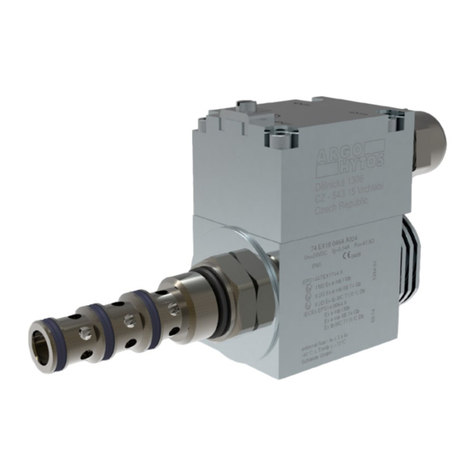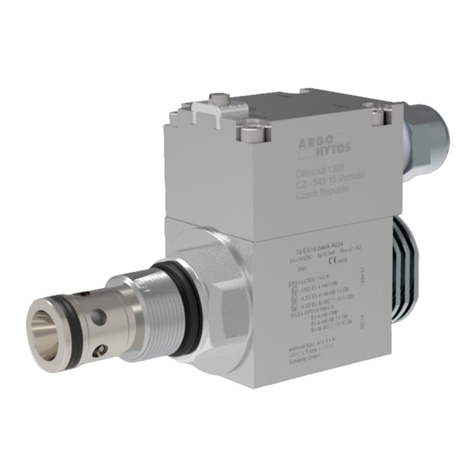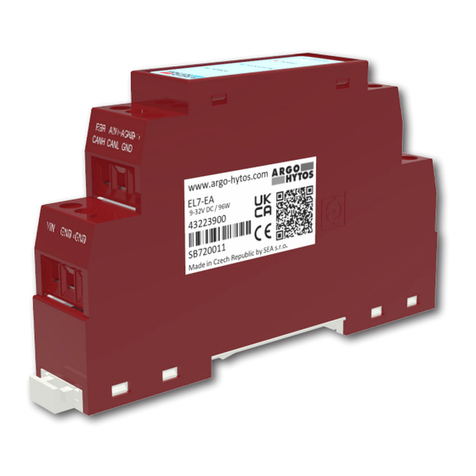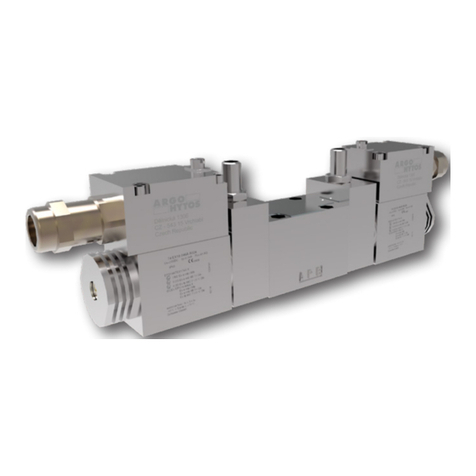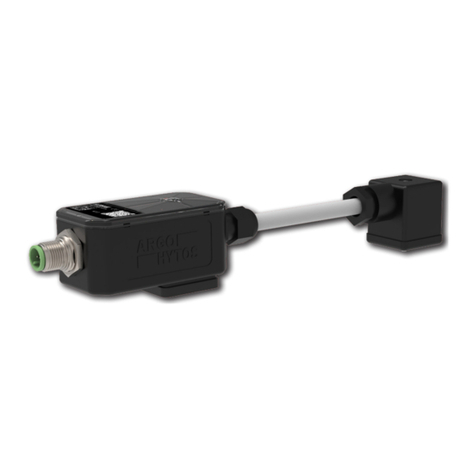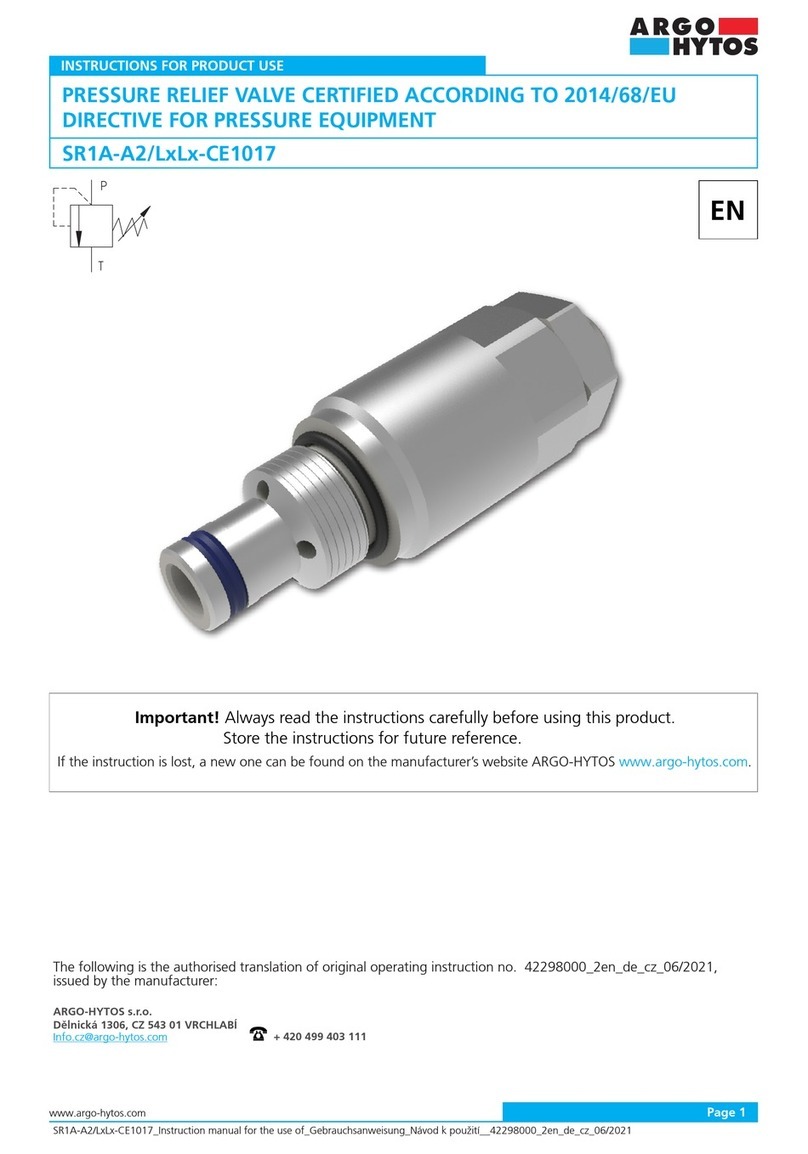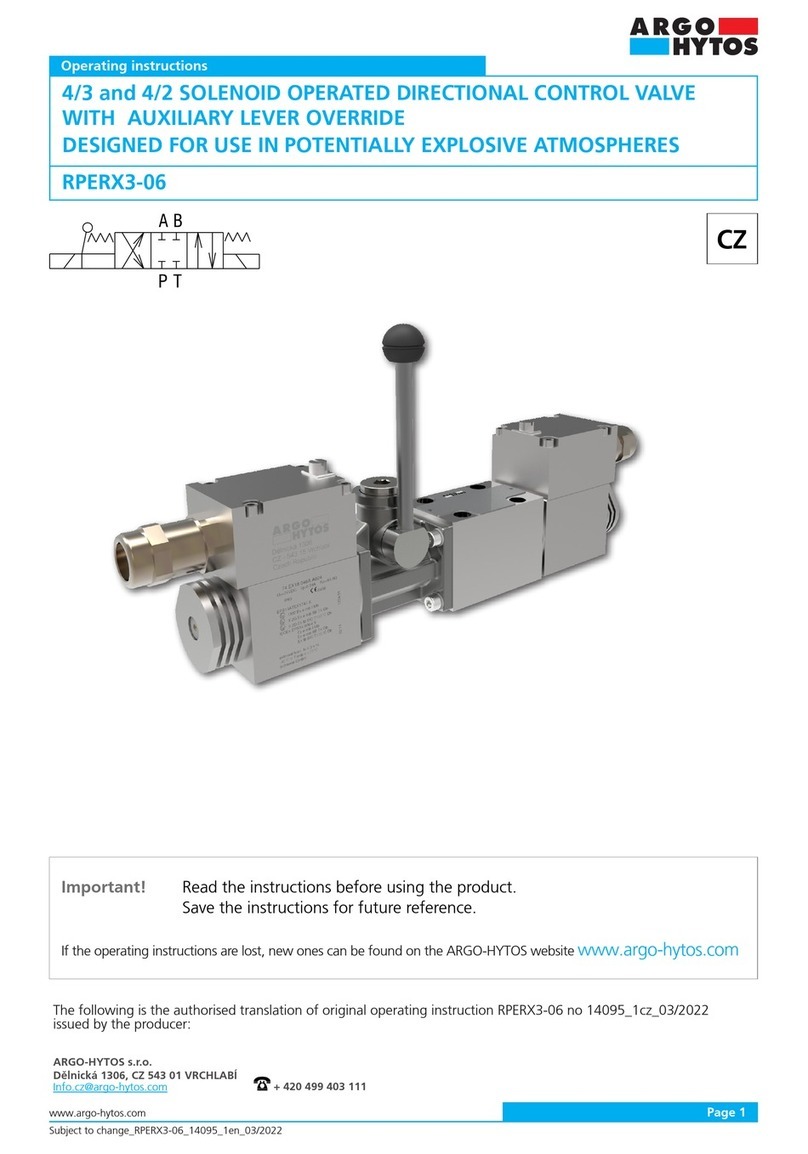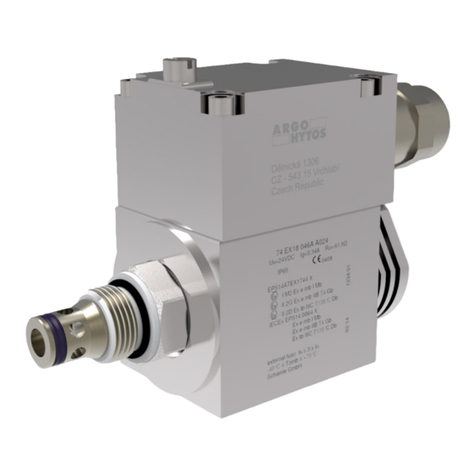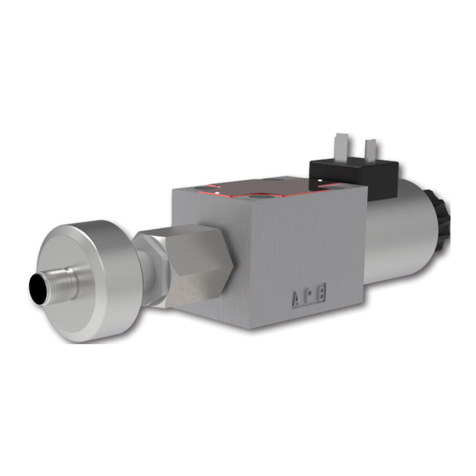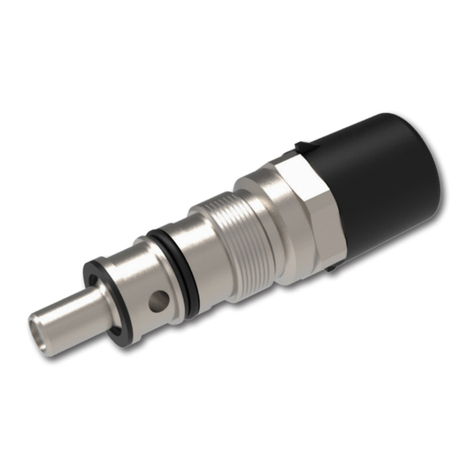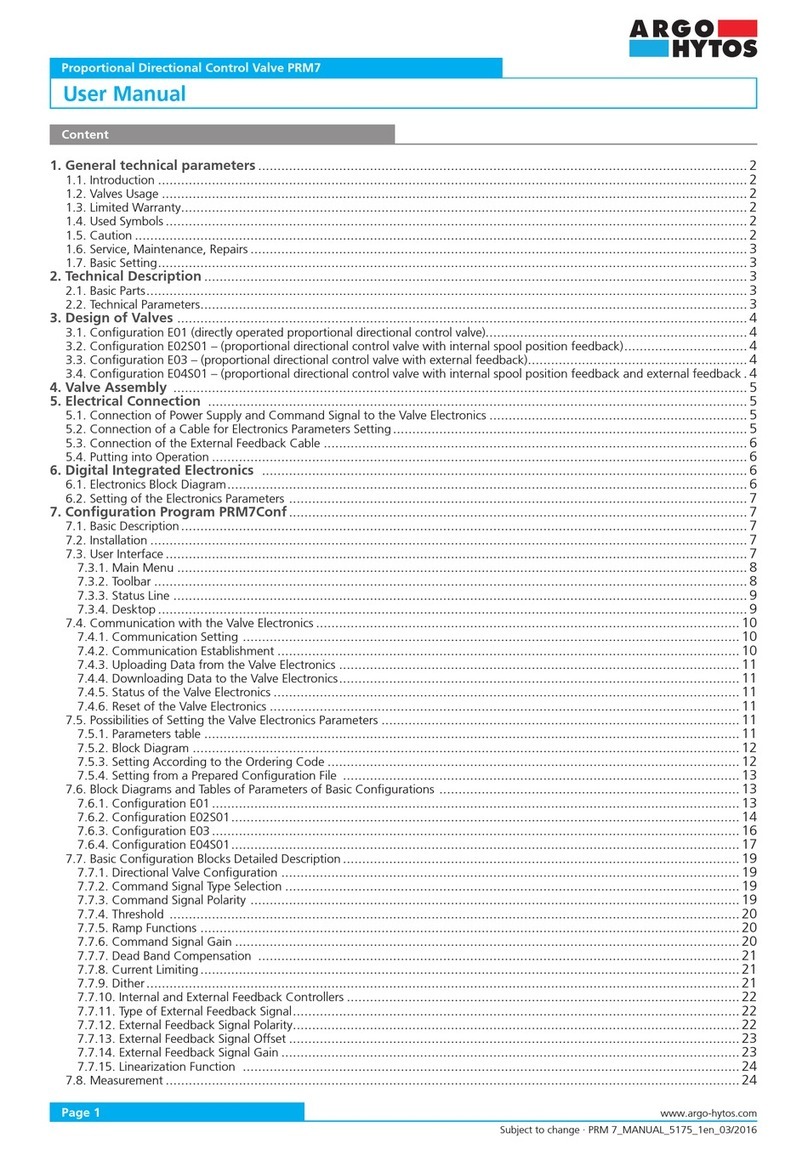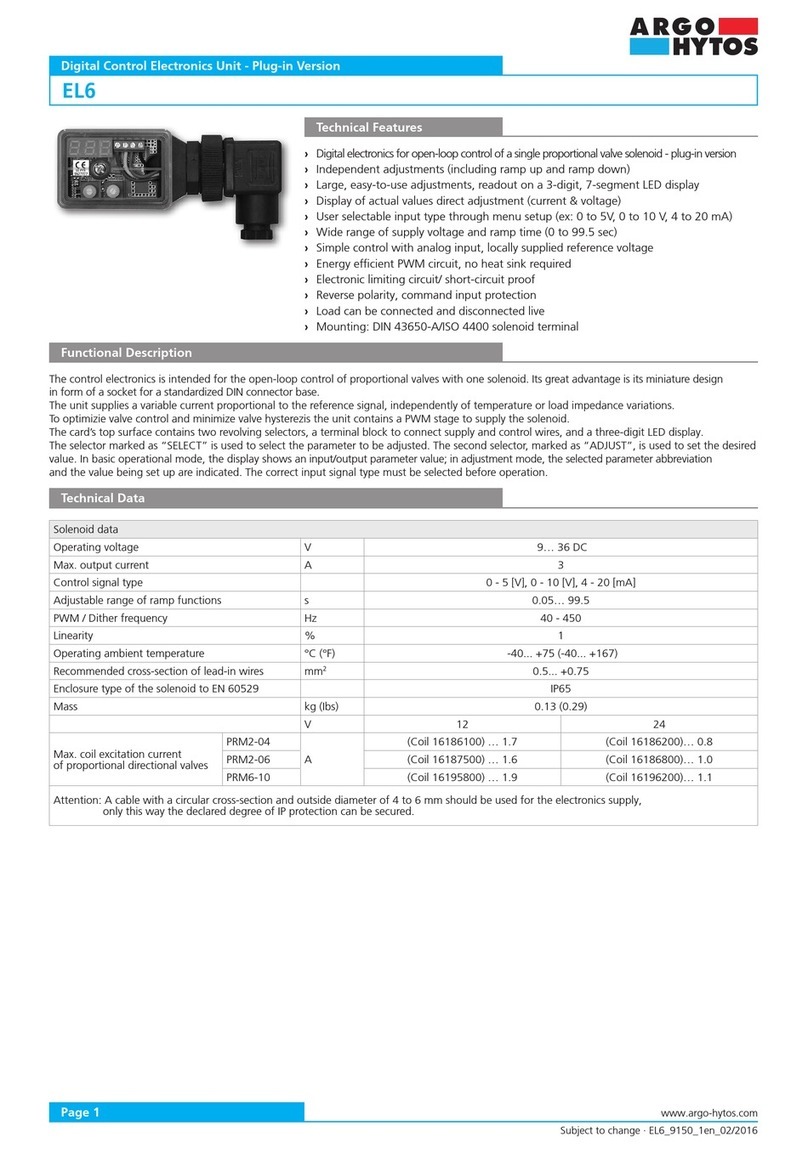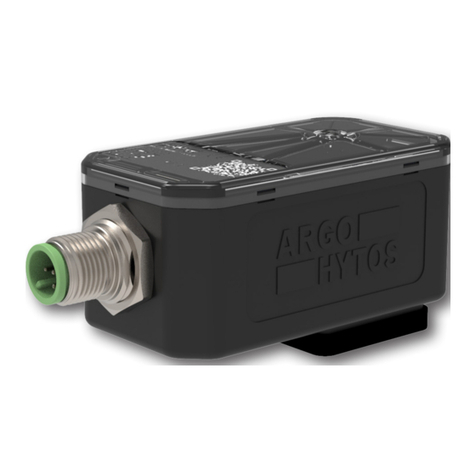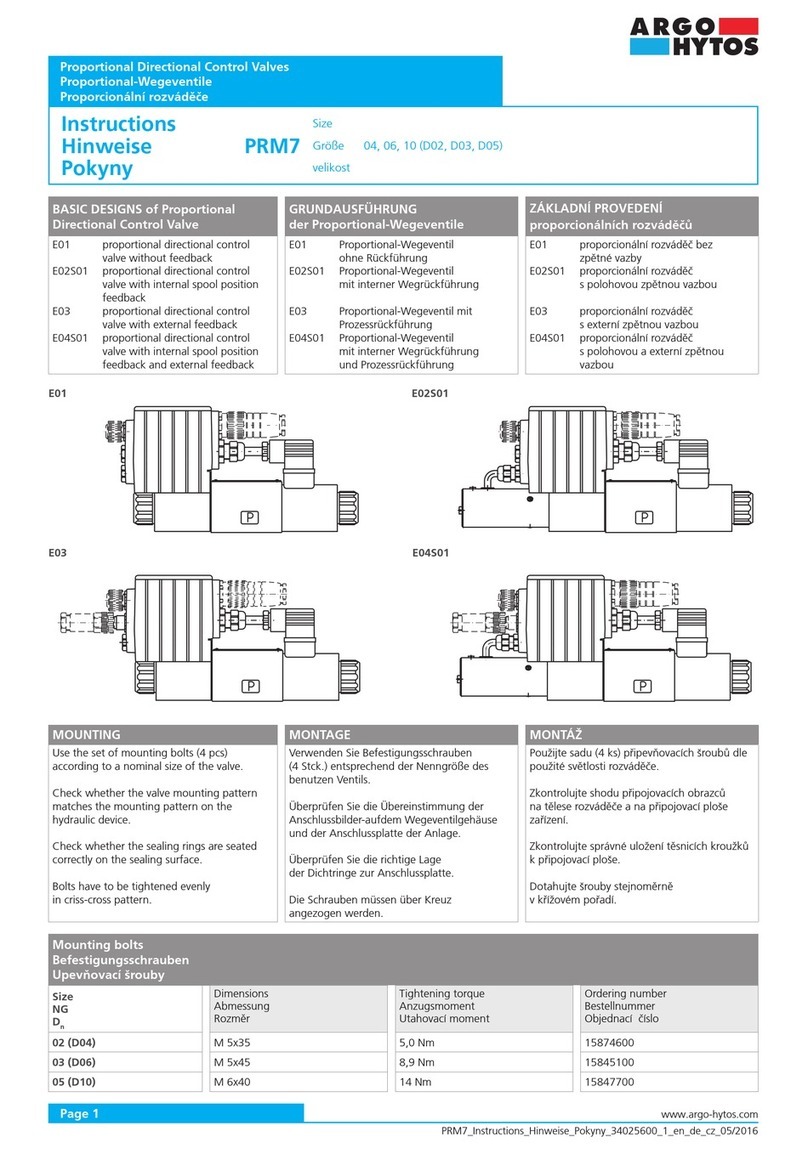
Subject to change_SD2PX-B4_15186_1en_04/2022
Page 7
www.argo-hytos.com
Valves with ATEX certification according to Directive 2014/34/EU and IECEx certification according to IECEx OD 009 and related harmonized
standards may be used in explosive atmospheres consisting of mine gas, gas or dust. The valves are marked with the CE Ex mark of conformity and
are accompanied by a Declaration of Conformity.
Use in explosive atmospheres:
Class I, mines, where the explosive atmosphere of mine gas is prodominantly methane
The valve has a high degree of protection (EPL = Mb), which makes iniation unlikely during the interval between gas discharge and valve shutdown.
It is designed for category M2 devices that remain off after gas discharge.
Class II, where the explosive atmospere consists of gasses other than mine gas
The valve has a high degree of protection (EPL = Gb) which allows the valve to be used in zones 1 and 2. There is a risk of explosion.
The valve is certified for all gas groups - IIA (typical is propane), IIB (typical is ethylene) and IIC (typical is hydrogen).
Class III, where the explosive atmosphere consists of dust and combustible flammable particles
The valve has a high degree of protection (EPL = Db) which allows the valve to be used in zone 20. There is a risk of explosion. The valve is
certified for all dust groups - IIIA (combustible flying particles), IIIB (non-conductive dust) and IIC (conductive dust)
CLASS I – MINES CLASS II (IIG) - GAS CLASS III (IID) - DUST
Category M1 – NO Zone 0 - NO Zone 20 - NE
Categorie M2
(the device remains
switched off)
Zone 1
Zone 2
IIA (propane) Zone 21
Zone 22
IIIA (combustible particles)
IIB (ethylene) IIIB (non-conductive dust
IIC (hydrogen) IIIC (conductive dust)
Area of application
Temerature classes
The valves are only supplied with a coil with a nominal supply of 18 W due to the function.
The surface temperature of the coil meets the conditions of class T4 with a maximum temperature of 135 °C.
The use of the valve in a given temperature class is conditional on not exceeding the maximum supply voltage of the coil, not
exceeding the temperature of the working fluid and the ambient temperature. (see table 4.4 Basic technical parameters)
The basic type of protection is to pot the coil with potting compound „m“ (EN 60079-18, IEC 60079-18).
U prachu je navíc použit pevný závěr „t“ (EN 60079-31, IEC 60079-31).
2. Valve protection against initiation of explosion of explosive atmosphere
2.1 Protection of electrical parts
The electrical part of the valve is an ATEX and IECEx certified solenoid coil.
The basic type of protection is to pot the coil with potting compound „m“ (EN 60079-18, IEC 60079-18). For a DC-powered coil, protection is
combined by potting the coil with „m“ using a terminal block with „e“ certification (EN 60079-7, IEC 60079-7). AC-powered coils have complete
„m“ protection, where in addition to the coil, the terminal block and rectifier are protected by potting. Therefore, these coils are supplied with only
the cable connected. For explosive atmospheres consisting of dust, a fixed „t“ closure is also used (EN 60079-31, IEC 60079-31)
EPS14ATEX1744 X IECEx EPS14.0064 X
DC
l M2 Ex eb mb I Mb Ex eb mb I Mb
lI 2G Ex eb mb IIC T4 Gb Ex eb mb IIC T4 Gb
lI 2D Ex tb IIIC T135°C Db Ex tb IIIC T135°C Db
Area of application:
2.2 Cable grommet
The cable grommet is a separately certified component with ATEX and IECEx certification:
I M2 Ex eb I Mb
II 2G Ex eb IIC Gb
II 2D Ex tb IIIC Db
2.3 Protection of non-electrical
The non-electrical part of the valve consists of the hydraulic part and the solenoid control system.
The safety of the non-electrical parts has been ensured and assessed according to
ISO 80079-36, ISO 80079-37 and EN ISO/IEC 80079-38
.
› The moving parts, the spool/cone, armature and pin of the control system, perform a sliding motion in a space separated by a seal from
the surrounding environment and flooded with working fluid.
› Not exceeding the maximum surface temperature of the given temperature class is conditioned by not exceeding the maximum temperature
of the working fluid (70 °C), the maximum ambient temperature (see table 4.4 Basic technical parameters) and the nominal voltage of the coil.
› The valve body and spool body are of robust construction, sufficiently resistant to destruction by mechanical shock.
(Valve body impact resistance test performed according to EN IEC 60079-0 paragraph 26.4.2: two impacts with a weight with a hardened head of
diameter D25 mm, weighing m = 1 kg, falling from a height of 0.7 m, with a total potential energy of 7 J)
› The hydraulic section has sufficient compressive strength, tested at 1.5 times the maximum operating pressure of the fluid.
› The surface of the valve, which is contact-conductively connected to the main stage, is earthed by a grounding screw and protected against static
discharge.
› The construction materials used meet the requirements for limited content of certain elements to prevent the formation of electrical cells and
excessive corrosion.
› The surface materials used do not produce sparks during mechanical impacts.

